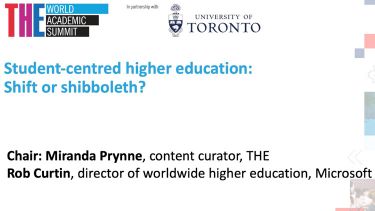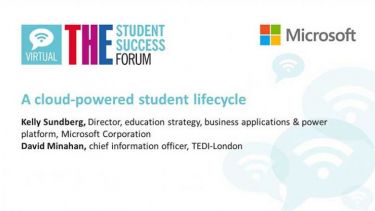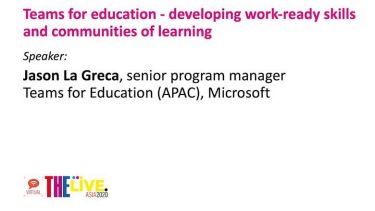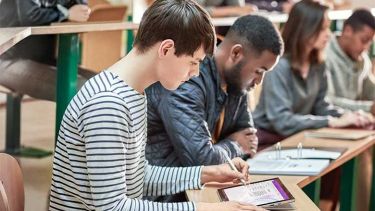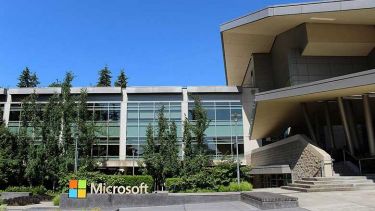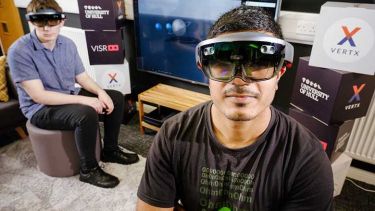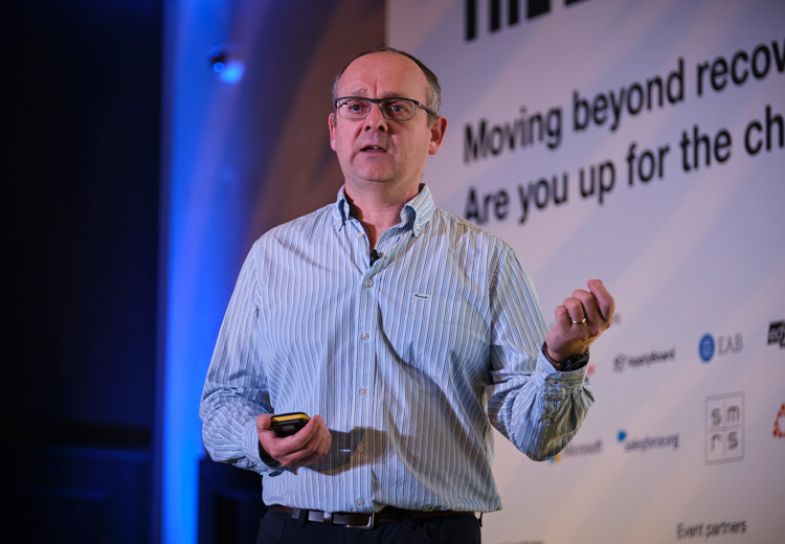
After a whirlwind period of digital transformation, Microsoft platforms are evolving to boost student outcomes and better engage employees
As universities grapple with creating effective blended learning experiences, the concept of sending an avatar to run a seminar with students logging in from across the world no longer seems like a scene from a science fiction film. Microsoft already offers a tool called Mesh that allows students and staff to experience the metaverse in the classroom.
Speaking at a THE Campus Live UK&IE session, held in partnership with Microsoft, modern workspace expert Ian Woolner demonstrated what universities can expect from the next wave of technological transformation.
Woolner explained that Mesh and other emerging tools such as collaborative whiteboards would create “new teaching and learning experiences”. Students and staff can attend classes remotely, as personalised avatars projected into a real-world classroom, from wherever they are based.
In a learning environment where students engage in multiple ways via a range of platforms, this creates a lot more data. “This data can drive insights on how things are going, why things might have improved, and where to go next,” said Alan Crawford, modern workspace expert at Microsoft.
At a basic level, class insights on Microsoft Teams show who has attended, while premium insights show how long students are spending on assignments. The insights provided can be used to tweak processes or customise learning experiences so they are more effective, Crawford said.
Universities will be able to better support staff and students thanks to developments to its Viva employee experience platform. Data on how employees use Teams can prompt leaders to suggest breaks if employees are logging in at unusual times, or provide users with insights on their working habits.
Artificial intelligence can speed up and enrich communication by offering prompts on image choice and design ideas, or by making suggestions on experts that could offer their own insights. Crucially, the digital university experience can extend beyond campus walls through Open Education Analytics, an open-source collaborative platform where institutions can develop shared insights from data.
Learning and career support must become part of business as usual for staff and students. Career Coach in Teams for Education provides personalised guidance for students through the familiar Teams interface, while employees can access LinkedIn Learning via the Viva platform.
Students looking to build on their academic qualifications through workplace skills can access courses using just a few clicks. “This drives value for institutions because it can boost your employment outcomes and you can build it into your student experience,” Crawford said. “There is no additional logging in. It’s a single user experience that becomes part of their everyday.”
The panel:
- Alan Crawford, modern workspace expert, Microsoft
- Ian Woolner, modern workspace expert, Microsoft
Find out more about Microsoft and higher education.

